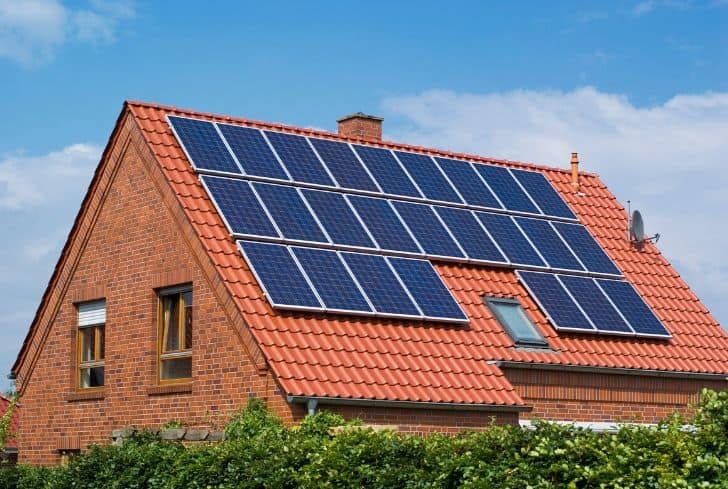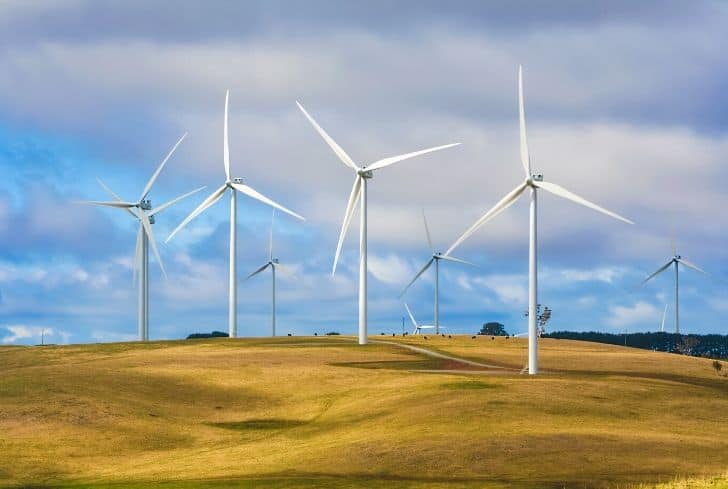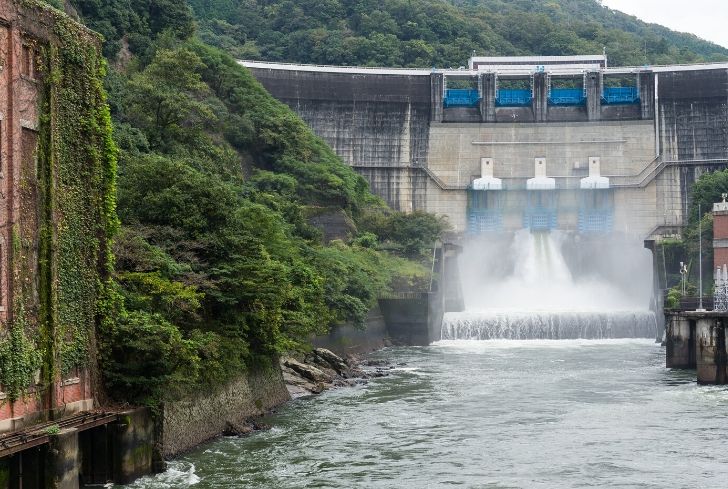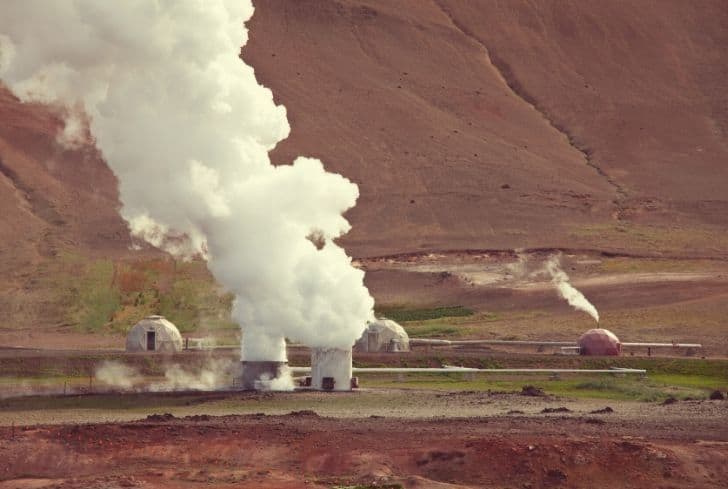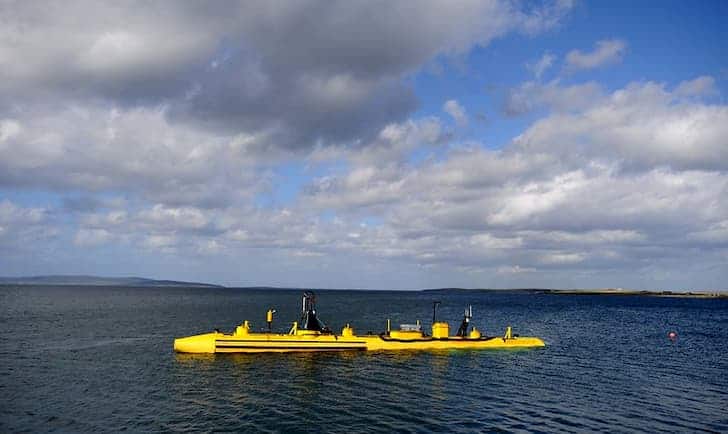When you hear people talking about renewable energy, they are referring to a source of energy that can be replenished or replaced within a human’s lifetime. The importance of renewable energy comes down to sustainability.
Since the industrial revolution, global energy demands have skyrocketed and our current dependence on fossil fuels, a nonrenewable source of energy, to meet those needs is not something that is sustainable in the long term since we are using up the resources faster than the earth is producing more. It is reasonable to assume that our energy needs will only continue to increase over time as countries’ populations continue to grow, so finding alternatives is important for society now, and especially for future generations.
Once the renewable infrastructure is built, the fuel is free forever. Unlike carbon-based fuels, the wind and the sun and the earth itself provide fuel that is free, in amounts that are effectively limitless.
~ Al Gore
Sources of Renewable Energy
Some of the emerging sources for alternative energy are solar, wind, and biomass. Other options include hydropower, tidal, wave, and geothermal energy, though they have not had as much growth and mainstream adoption as the others.
So how do they work? And if they are renewable and so much better for the environment and future generations, why aren’t we using them exclusively now? The answer to those questions is complicated and not really a single reason, but rather a combination of many factors, some of it political or economic and some of it comes down to the limitations of the technology itself.
Solar Power
- Solar power consists of capturing sunlight in special photovoltaic cells that convert sunlight into electricity. That electricity is then typically stored in batteries for use later.
- Solar power as a source of energy is especially exciting because it produces no pollution during its use and is completely silent. The only pollution created is during the actual manufacture of the cells and is a minuscule amount considering its other environmental benefits.
- Solar power also scales incredibly well. You can use a single small cell to power a calculator, or place an array on a home in the city to supplement or replace reliance on the power grid, up to a large scale solar farm in the desert to act as a regional power plant.
- It works great in remote locations where running power lines would be difficult or costly. The use of solar panels to power satellites in space is a great example of the ways solar can provide power to places not hooked up to the power grid (and in this case impossible to hook up)
Of course, solar is not without its own drawbacks, the cost to get it all set up is one of the largest. The cost however continues to come down as the technology matures and tax credits exist in many areas to encourage people to make the initial investment. Solar cell’s efficiency is also adversely affected by cloudy overcast weather and completely useless during the night.
In spite of these negatives though, there is huge potential in the future of solar energy, especially when you consider statistics like the world’s current energy consumption could be taken care of for 27 years from the energy of a single day of sunlight hitting the earth. Assuming of course we were able to capture that energy. That is pretty amazing to stop and think about how incredible that is though!
Wind Power
- This is actually a pretty old source of energy for humanity, when you think of how long people have used the power of the wind to sail ships across the world’s oceans for trade and exploration, of course, sailboats and windmills still exist but these days, wind turbines are used to generate electricity rather than simply crushing grain or to pump water.
- Wind turbines can exist offshore or onshore, though most of the time they are placed in remote or rural areas because of noise created and because the room required for the spinning turbines is not well suited for urban environments.
- Wind power has the same advantages as solar as far as its source being plentiful and completely renewable, with no harmful air or water pollution from its use. It is not as quiet as solar, however, and many people complain about the aesthetics of a bunch of turbines being an eyesore or ruining an area’s natural beauty. While they might support wind power for the bigger picture of cleaner energy and lessening reliance on our dwindling supply of fossil fuels it becomes a case of a ” not in my backyard” sort of mentality.
- Not everyone however shares that opinion and it’s worth noting that as of 2014 Denmark generated 40% of its electricity from wind power, with a plan to increase that to 50% by 2020 and 84% in 2035 The Danish government has been a pioneer of using wind power since the 1970s and a large share of turbine manufacturers on the market today are Danish.
Biomass Energy
- Biomass refers to using the biological material for energy. It could be as simple as directly burning it for a heat source, like a log in a fireplace, or by converting it through various processes into some form of bio-fuel such as ethanol or biodiesel.
- The main advantage of biomass as a fuel is in the use of waste material as a fuel source. Reducing waste is just as important as meeting energy needs, so getting that dual benefit is appealing. Some examples of waste as a bio-fuel would be using discarded vegetable oil to create biodiesel and capturing methane gasses produced by the breakdown of materials in landfills.
- Corn and Soy are also often used to create ethanol. While it is a renewable source, the biggest problem with biomass as a replacement for our energy needs would be it competing with our food needs. We only have so much land that is suitable for growing our food, much less having to share that limited fertile land to grow corn or soy or whatever for our fuel needs as well. Of course, as our population continues to grow, needing more food and energy, this problem becomes even worse.
- It also requires a good amount of water to grow these crops, a resource that in itself is very important for our survival and in short supply in many regions (the current California drought being a great example).
- The last thing to note about biomass as a fuel or heat source is that while it has lower carbon emissions than fossil fuels, it is still not a totally clean source of energy like wind or solar.
Hydro Power
Hydropower provides a clean and renewable power source as it works by harnessing the flow of water in an area. Rivers can be used, but dams and reservoirs can also be built to create a reliable energy source for the plant.
- Unlike solar and wind, water sources are more stable and reliable. This in turn makes the power to the plant more reliable than these other clean energies too.
- There is no mining and no burning associated with water power. The overall rate of pollution released during the production of hydropower is far less than any other fossil fuel type.
- Hydropower plants may have a higher cost to build, but the lifetime costs of a plant work out to be much more cost-effective than fossil fuel dependent energy plants.
- While fossil fuels can take thousands of years to renew themselves, water renews its amount on a regular basis.
- Reservoirs can be used for irrigation, public water and as recreational points in a community. The additional use potential of the reservoir makes this for of power, even more, cost-efficient.
- Creating reservoir damage the marine ecology of an area that then affects all of the other ecologies around it. Even though the ecology is replaced with the one in the reservoir, it is not the ecology native to the area.
- There are certain “wild card” factors that naturally occur that can dramatically lessen hydro-powers production. Factors such as drought, extreme weather and excess evaporation can all cause water levels to drop.
- While the overall lifespan cost of a plant may be less than fossil fuels, it is much higher in cost to create a hydropower plant and maintain it over its first 10 years.
- Hydropower reservoirs pose an imminent danger to the surrounding human populations. The dam can break, or overflow and cause flash flooding easily.
Geothermal Energy
Geothermal energy is one of the cleanest forms of renewable energy to use. It is done by running systems underground to allow the Earth’s natural heating and cooling properties to transfer to the liquid passed through the strata.
- This type of renewable energy scores high on an environmentally friendly scale. There is next to no pollution resulting from its use.
- The source of the energy, the Earth’s strata, is always replenishing itself.
- It is thought that if all the areas currently able to use geothermal energy did so it could add 2 terawatts of power to our resources.
- Less reliable powers such as solar and wind can’t be used to meet the baseload need of a community, but geothermal power is highly reliable and can meet that need.
- You can use geothermal power as easily for a home as you can a major building.
- Half of a geothermal plant is underground so you don’t need much space to build one.
- Research programs to improve on current technologies are well funded compared to other energy sources.
- There is no way to build something on land or go underground, without there being an environmental impact. It is small with geothermal plants, but still there.
- Earthquakes and other seismic activity can damage a geothermal system.
- While less land is used, the cost of constructing a geothermal system is much higher than other types of plants.
- The current technology only allows for certain regions to use geothermal power.
- If a geothermal system is not managed correctly the power resource can run dry.
Tidal Energy
Sometimes referred to as Ocean Power, tidal energy focuses on harnessing power from the ocean’s currents and tides and transforming them into energy for land use.
- Tidal energy is dependent on gravitational fields between the Earth, sun and moon. This forms a constantly renewing cycle of energy.
- This is also one of the greenest and cleanest forms of renewable energy known. It doesn’t mean that it is without impact when put through a plant, but that the impact is far less than other energy processes.
- The science of predicting tidal currents is very old and highly developed. This makes it a more reliable source of energy than wind or sun which can break predicted patterns easily.
- It can be hard to get wind and solar to produce when there isn’t much going on, but tidal energy is very effective when low-speed tides are present due to the high density of water.
- Although this is a very new power it is projected that the power plants themselves will have a longer lifespan and require less maintenance than other types of energy facilities.
- Yes, tidal power is very green and environmentally friendly, but the exact impact of the plant is not known yet as the technology is too new.
- Right now the actually energy facility for tidal power has to be built near land in strong currents. This occupies real estate that could be used in other ways and represents a potential threat to the environment and ecology there too.
- This is a very expensive form of energy to implement, mostly because the technology is new.
Hopefully, now you better understand the meaning of what renewable energy is and have a better understanding of its importance for a future of sustainable energy. While still imperfect alone, steps are being made to mitigate the disadvantages as much as possible and improve the efficiency and viability of renewable energy as our primary source of energy instead of our current reliance on unsustainable fossil fuels.

